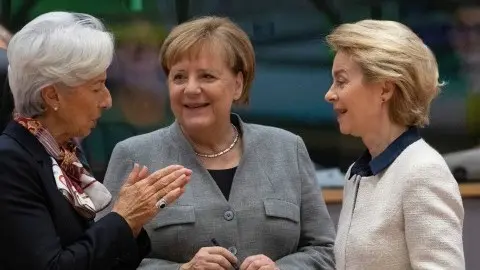Ireland: Brexit and future trading anxiety
The Irish economy continues to grow at an exceptional pace, which is likely to become more modest over the course of 2020 as supply-side constraints, government spending and trade uncertainty bite
Brexit is set to move to phase 2, but uncertainty remains
The never-ending saga continues. Even though the UK election result does provide somewhat more of a stable path towards a structured Brexit, the UK departure from the EU can still result in widely varying outcomes for the Irish economy in 2020. Even though the front stop in the Withdrawal Agreement has brought some relief, Ireland is still dependent on UK trade and therefore the future trading relationship matters a great deal for the Irish economy.
The path towards a trade deal is short as the end of the transition period is already at the end of 2020. Experts say that a good free trade agreement is almost impossible to achieve in such a short time, but British prime minister Boris Johnson has said that he will not extend the transition period by another two years. As the Conservatives have won a comfortable majority, it seems electorally possible for him to change his mind on this matter, but does he want to is the real question. If the transition period is extended, this would take away economic uncertainty and rule out a cliff-edge Brexit, which for now still remains a possibility.
Regardless, with this election result “Remain” is now almost certainly off the table, which means that Ireland will start to see some negative effects on its economy from Brexit being put into motion.
A red hot economy, set to moderate
But let’s not overestimate the Brexit impact either. Growth rates in Ireland have remained stellar over the past few years despite Brexit uncertainty. Of course, impacted by activities from multinationals operating in Ireland, but the alternative modified domestic demand figures also show continued strength in the domestic economy stripped from multinational activity. In the third quarter, Irish GDP grew by 1.7% quarter-on-quarter, outpacing all other eurozone economies. Modified domestic demand even grew by 3.6% q-o-q, which shows that growth in the Irish economy is not just determined by volatile multinational capital flows.
Local investment, mainly in construction, has continued to improve despite Brexit uncertainty. This makes sense given the housing shortages that Ireland faces. Supply problems are shrinking due to the ongoing construction sector investment, but are not expected to meet demand in the coming year. Shortages and low-interest rates are therefore likely to underpin ongoing house price growth in 2020 albeit at a somewhat more modest pace.
Growth rates in Ireland have remained stellar over the past years of Brexit uncertainty
Household consumption has also maintained a healthy pace as the labour market continues to rapidly expand. Even though job growth contracted in the second quarter, this is more of an anomaly than a trend. The unemployment rate stands at just 4.8% in October, far below the eurozone average and providing a strong indication that Ireland is at full employment. Still, vacancy rates are well below the eurozone average, partly because of an influx of immigrants to Ireland as the economy continues its recovery. Since early 2015, the amount of non-Irish citizens in the Irish labour market have increased by 27%, which alleviates some of the labour market pressures seen in Ireland.
Still, it is likely that labour market constraints become more visible in the Irish economy over the course of 2020, curbing growth in domestic demand. On top of that, government spending will be contractionary according to the budget proposal for 2020 as the Irish government has worked on the assumption of a no-deal scenario. As this is unlikely to emerge, spending can be considered conservative over the course of the year. Not that the economy needs stimulus, but it will add to an overall picture of a red hot economy cooling off in 2020.
Irish economy in a nutshell (% YoY)
This publication has been prepared by ING solely for information purposes irrespective of a particular user's means, financial situation or investment objectives. The information does not constitute investment recommendation, and nor is it investment, legal or tax advice or an offer or solicitation to purchase or sell any financial instrument. Read more
Download
Download article
16 December 2019
ING’s Eurozone Quarterly: Is this recovery for real? This bundle contains 13 Articles